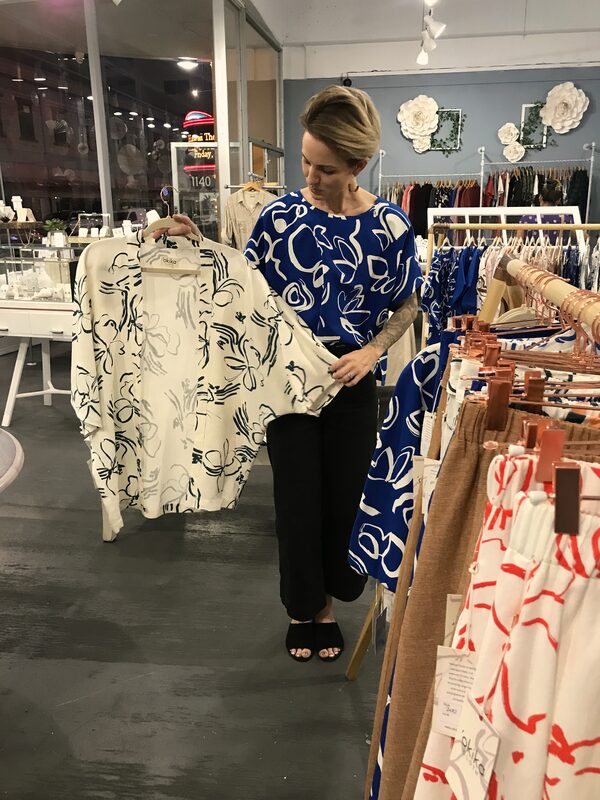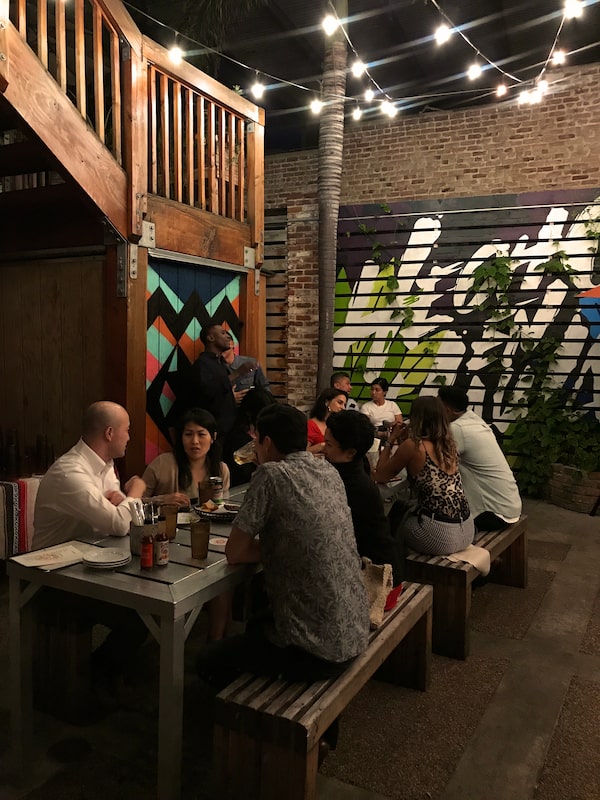Murals in Kaka’ako, the east side neighbourhood of Honolulu that, through the years, has had several incarnations.Alyssa Schwartz/The Globe and Mail
Running along Oahu’s southern shore, Ala Moana Boulevard straddles the Honolulu that draws countless sun-seeking tourists year-round and the Honolulu many visitors don’t know exist.
To the west, a long expanse of reef-protected white sand stretches down to Waikiki Beach, the sprawl of high-rise resorts, designer boutiques and touristy surf shops that collectively generate nearly half of Hawaii’s total annual tourism revenue. To the east is Kaka’ako, a neighbourhood that, through the years, has had several incarnations, including as ancient Native Hawaiian fishing ponds, a quarantine centre for smallpox and bubonic plague, a sewage treatment plant and garbage dump, and, most recently, blocks of warehouses and auto garages.
Old works were whitewashed to make room for new ones as part of the annual week-long Pow! Wow! Hawaii festival that concluded on Feb. 15.Alyssa Schwartz/The Globe and Mail
And at the corner of Ala Moana and Ward Avenue, a mural connecting these two disparate worlds spans the wall of Biki bikeshare’s corporate office. Drenched in tropical colours – coral, aqua and golden yellow – and floral motifs evocative of a Hawaiian-print shirt, the painting is foreboding nonetheless. “Enjoy the Golden Future,” it instructs in retro font, the message stencilled next to a tsunami-sized wave that appears poised to wipe it all away. The blocky newsprint style is instantly recognizable as the work of Shepard Fairey, best-known for his iconic Barack Obama “Hope” poster. The message of this massive, sardonic piece is quite the opposite – a warning about the perils of climate change and an appeal for environmental sustainability.
Fairey painted the mural, his first in Hawaii, while headlining last year’s Pow! Wow! Hawaii festival, an annual week-long arts event that features live mural painting by Hawaiian and international street artists, a night market and hands-on workshops with local makers. When I visited at the beginning of February, many previous works had been whitewashed to make room for new ones; by the end of the festival’s 10th anniversary festivities, which wrapped on Feb. 15, dozens of new murals appeared among the more than 200 street paintings crammed into Kaka’ako’s colourful blocks.
Visitors paint a white dress on display at the non-profit centre, Arts at Marks Garage.Alyssa Schwartz/The Globe and Mail
But you don’t have to visit during the festival to mingle within Honolulu’s small, friendly arts community and enjoy this hipster neighbourhood. Wandering Kaka’ako one overcast afternoon, I poked my head through a single black door marked Aupuni Space, flanked by massive paintings by Native Hawaiian artist Solomon Enos. A group show by a collection of Hawaiian artists who used the state flag to explore themes of indigeneity and sovereignty had just wrapped the day before – and the staff inside were preparing for an ironic screening of the movie Spice World that night – but curator Josh Tengan let my friend and me check out the exhibit before sending us off in the direction of some of his favourite murals.

Meleina Hancock, founder and designer of made-in-Hawaii line Okika Cloth, says its abstract print was inspired by the shadows of leaves she used to see on Oahu’s North Shore where she grew up.Alyssa Schwartz/The Globe and Mail
After we walked up an appetite, we stopped at Salt at Our Kaka’ako, an open-air entertainment, shopping and dining complex named for the wetlands that occupied these blocks hundreds of years ago. The the trendy mall could easily be transplanted to Venice, Calif., or Wynwood in Miami. But the artisanal shave ice stand, high-end surf shops and restaurants selling poke, fish tacos topped with fresh papaya and plate lunches impart an unmistakable sense of aloha.
The next night we hit Honolulu’s Chinatown for First Friday, a monthly public arts celebration. Dating back to the 1800s – making it one of the oldest Chinatowns in the United States – the downtown neighbourhood was one of Oahu’s seediest for years. Starting with the restoration of the century-old Hawaii Theatre, it’s undergone steady revitalization over the past decade. But the area truly comes alive the first Friday of each month, when its galleries and boutiques set up free bars and DJ stands, and artists hold court.
At the Arts at Marks Garage, a non-profit centre that helped pioneer the art scene here, someone handed me a paint brush and invited me to help decorate a white dress on display. After dodging a stream of hot pink paint thrown by an overenthusiastic Jackson Pollock wannabe, we moved outside – where a small parade of dancers in full-size Chinese dragon costumes were convening. We continued on to Banks Journal, a long, narrow surf boutique, where a bartender from nearby Proof Social Club pressed glasses of champagne in our hands and abstract blue images projected on the white walls and ceiling made me feel like I was partying under the sea.

Back patio at Fête, a packed restaurant and cocktail bar run by husband-and-wife owners Chuck Bussler and Robynne Mai‘i.Alyssa Schwartz/The Globe and Mail
Around the corner, I admired a cotton top the same shade of cerulean as the water alongside a coastal hike I did that morning. Meleina Hancock, founder and designer of the made-in-Hawaii line ‘Okika Cloth (Hawaiian for orchid), told me its abstract print was inspired by the shadows of leaves she used to see on Oahu’s North Shore where she grew up. When I asked about her techniques, she invited me to a hands-on dye workshop she was leading at Apuni Space in Kaka’ako during Pow! Wow!.
As the First Friday festivities began to die down, we ducked into Fête, a packed restaurant and cocktail bar that husband-and-wife owners Chuck Bussler and Robynne Mai‘i call their “Hawaii Brooklyn Hapa Baby.” The brick walls and shared plates may evoke the New York neighbourhood, but crab toast served with a side of lilikoi (passionfruit)-studded chili sauce and gougeres slathered with creamy smoked marlin spread are pure Hawaii – in a way you won’t taste anywhere else on the islands. As I sipped my yuzu-gin sour and looked around the room, I spotted a familiar face: the paint-throwing woman from the earlier stop on our art crawl. We smiled at each other and I raised my glass, feeling like I’d been let in on a Honolulu secret.
The writer travelled courtesy of Hawaii Tourism. It did not review or approve this article.
Get inspired by the weekly Sightseer newsletter, with travel advice, destinations and more. Sign up today.